![]()
![]() NOU
NOU
![]()
Continuando con esta investigación histórica, publicada por este sitio Web http://www.historiatdf.com.ar/ con el título de "Breve Reseña Histórica, actividad férrea de trocha angosta "El Páramo", se agregan ahora 4 nuevas fotos del trencito del Páramo que se incorporan a las 11 fotos de restos férreos en Cullen.
FOTO 1
FOTO 2
FOTO 3
FOTO 4
Se incorporan 11 fotos restos férreos Cullen, Tierra del Fuego, Argentina.
Fotos, investigación y recopilación histórica: ©David N. F. Guevara/2002-2011
FOTO 1
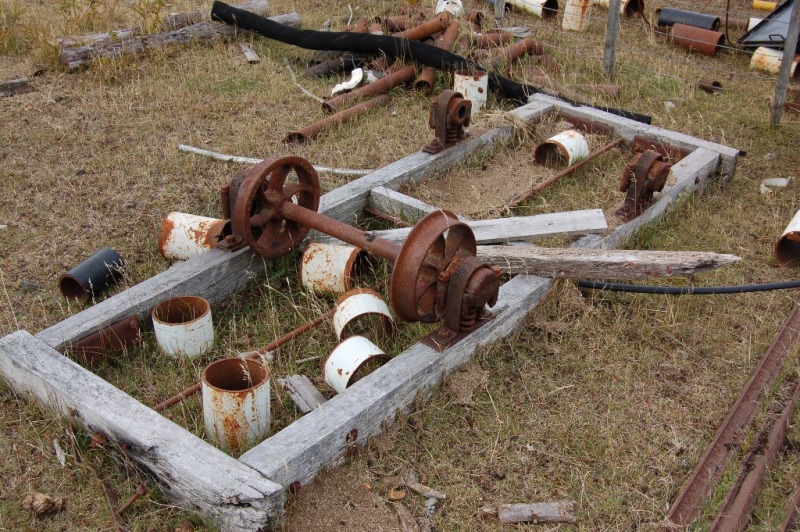
FOTO 2
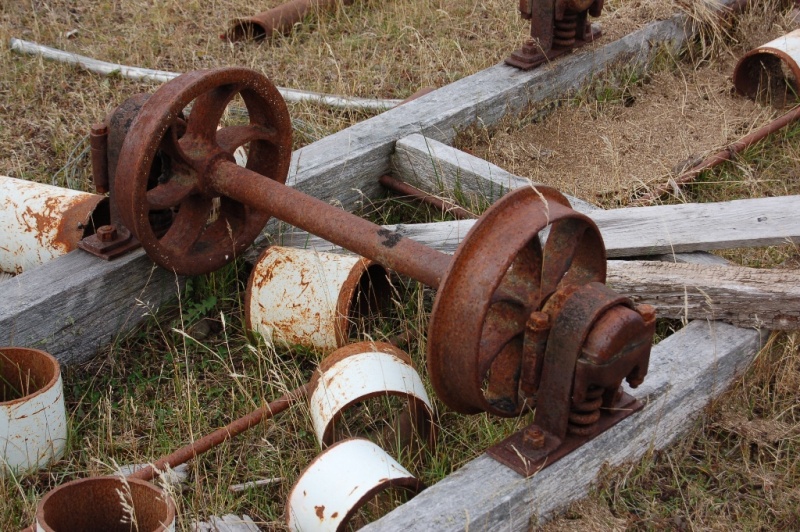
FOTO 3
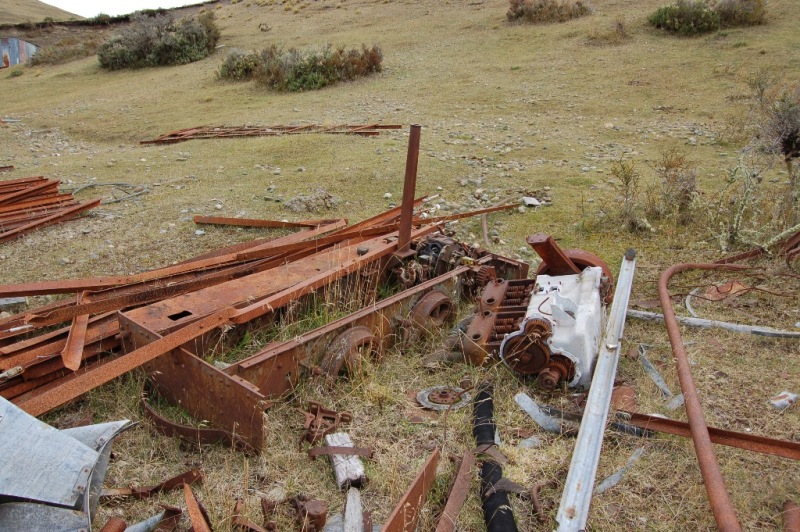
FOTO 4
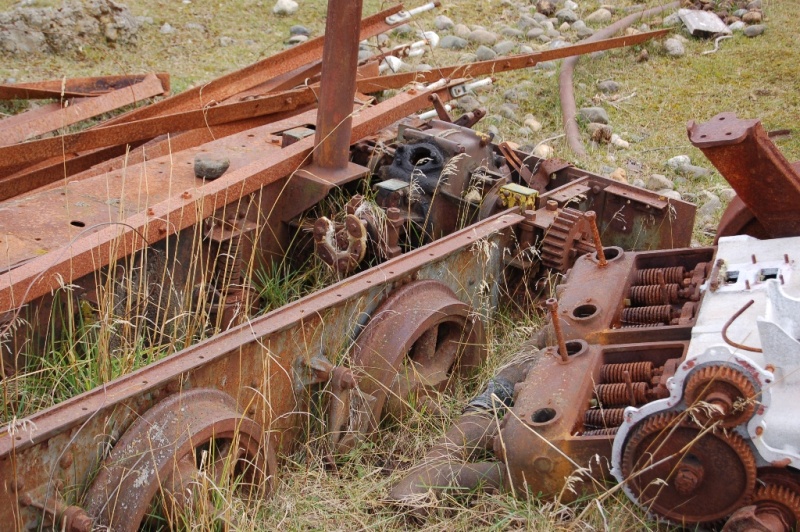
FOTO 5
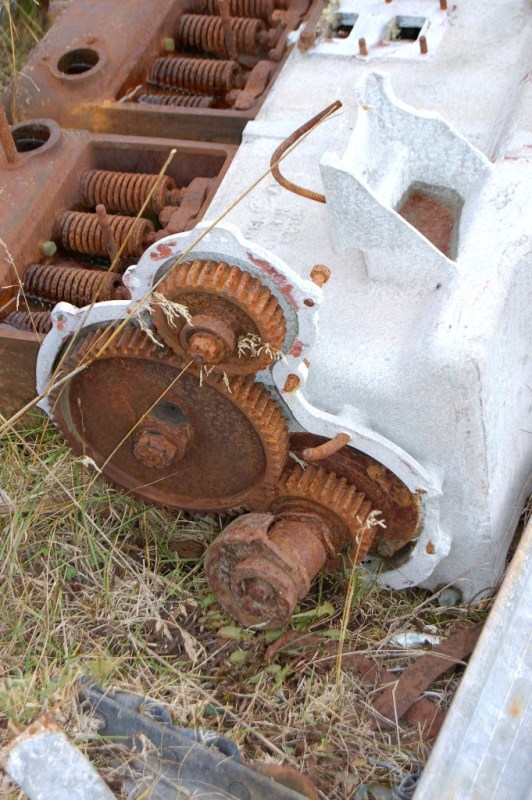
FOTO 6
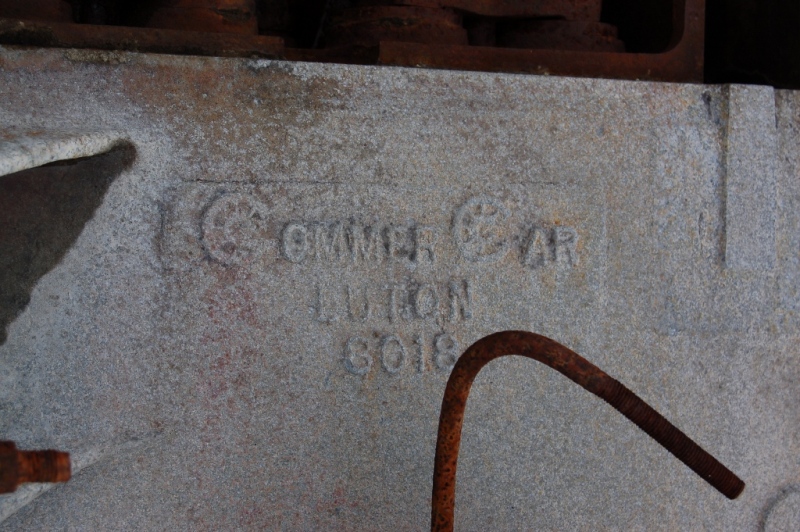
FOTO 7
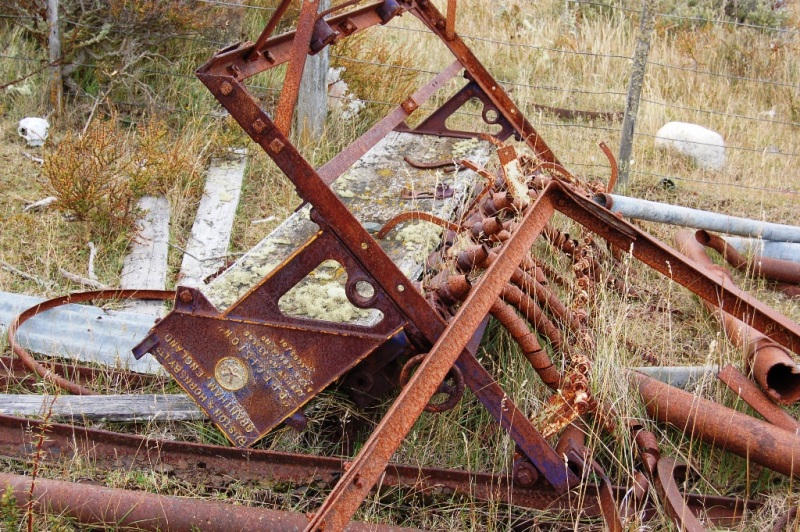
FOTO 8
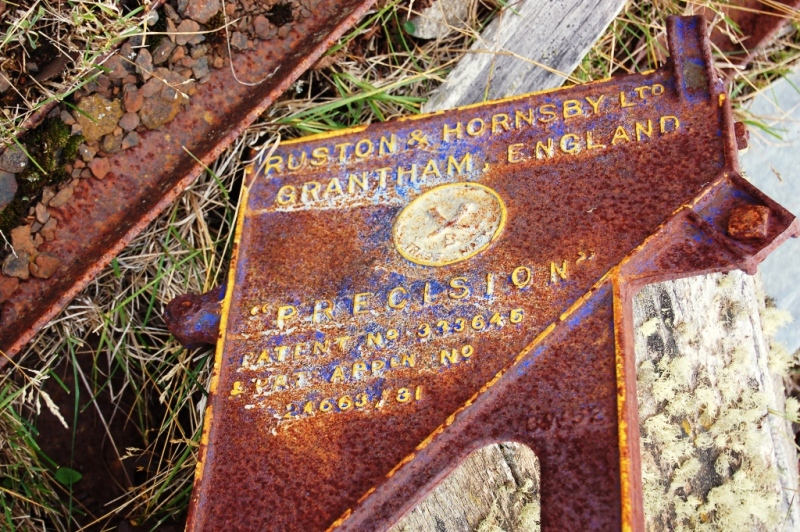
FOTO 9

FOTO 10

FOTO 11
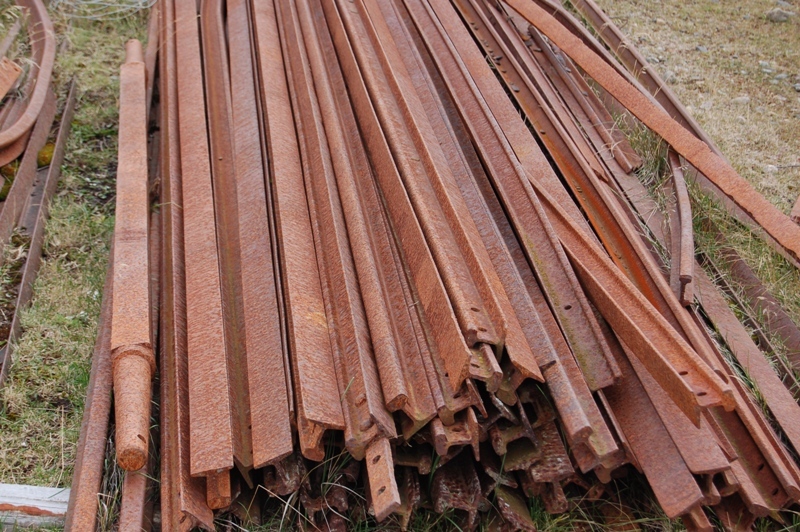
![]()
![]()
![]()
![]()
![]()
|
Breve Reseña Histórica Actividad férrea de trocha angosta "El Páramo"
Fotos, investigación y recopilación histórica: ©David N.F.Guevara/2002-2003 |
Historical Résumé The Narrow gauge Railway at "El Páramo"
Photos, research and historical compilation: – ©David N.F. Guevara, 2002-2003 |
Rezumat istoric Calea ferata ingusta de la El Paramo
Fotografii, cercetare si compilatie istorica:David N.F. Guevara, 2002
|
![]()
![]()
![]() NOU
NOU
|
EL PARAMO, 1887/1893: En el año 1887 en la porción septentrional del área territorial de la República Argentina de la Isla Grande de la Tierra del Fuego, al norte de Bahía San Sebastián sobre el litoral Atlántico, el Ingeniero Julio Popper fundó el establecimiento minero de El Páramo que giró en forma comercial bajo la razón social "Compañía Anónima Lavaderos de Oro del Sud". Es el propio Popper quien al efectuar una descripción detallada de dicho establecimiento citó puntualmente: "....... y bordeando la playa, sigue hacia el sud una línea de rieles Decauville....", son estas vías de trocha angosta (0,60 mts.) la que permitieron, mediante el uso de tolvas mineras (ver foto 1 ) acarreadas por caballos y/o bueyes, el transporte de las ricas arenas auríferas de playa hasta el lavadero principal del establecimiento (ver foto 2). Es posible, a la luz de los antecedentes históricos existentes, que parte de este material férreo haya sido utilizado posteriormente por parte de la Estancia Cullen ("Station Cullen Limited") para la instalación y funcionamiento en el año 1922 del tren de El Páramo para el transporte de fardos de lana y mercaderías. |
El Páramo, 1887-1893
In 1887, in the northern part of isla Grande (Mainland) Argentine Tierra del Fuego, to the north of Bahía San Sebastían, on the Atlantic coast, the engineer, Julio Popper, established the El Páramo mine which operated as the Compañía Anónima Lavaderos de Oro del Sud (Southern Gold Washing Company Limited).
It is Popper himself who gave a detailed description of the works " . . . and bordering the beach, leading to the south, is a Decauville railway . . .". It was those narrow gauge (60 cm) tracks which allowed the rich gold-bearing sands of the beach to be brought to the principal gold washer of the establishment by means of tipping wagons (see photo 1) pulled by horses or oxen (see photo 2).
It is possible, in the light of existing historical knowledge, that part of the railway material was later used by Estancia Cullen (Station Cullen Limited) in the construction in 1922 and subsequent operation of the El Páramo train for the transport of bales of wool and for goods.
|
El Paramo, 1887-1893
In anul 1887, inginerul Julio Popper a infiintat in nordul Insulei Grande a Tarii de Foc argentiniene, pe coasta Atlanticului, la nord de Golful San Sebastian, exploatarea aurifera El Paramo unde a functionat Compania Anonima Lavaderos de Oro del Sur .
O descriere detaliata a lucrarii a facut-o Popper insusi , “…si de-a lungul plajei, in directia sud, este o linie de decovil…”. Aceasta linie ingusta, cu ecartament de 60 cm, servea la transportul nisipului aurifer catre principala instalatie de spalare, in acest scop folosindu-se vagonete (vezi foto 1) trase de cai sau boi (vezi foto 2).
Conform unor dovezi istorice este posibil ca parte din materialul acestei cai ferate sa fi fost folosit ulterior de Statia Cullen ltd. in constructia din 1922 trenul de la El Paramo fiind utilizat pentru transportul baloturilor de lana si a altor bunuri.
|
FOTO 1 Photo 1 FOTO 1
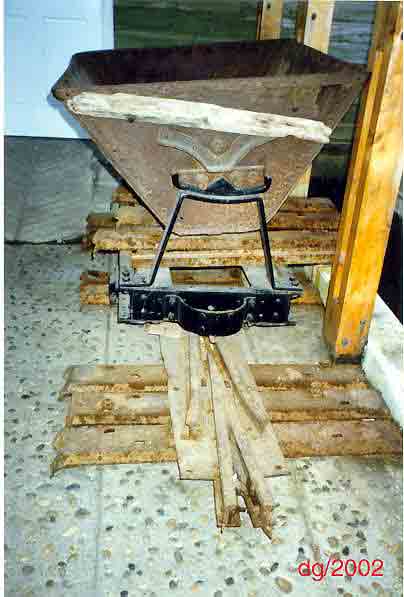
|
Foto 1: Tolva minera utilizada por Popper, año 1887/1893. Los durmientes y rieles que se observan no corresponden a la trocha angosta usada en El Páramo. Se trataría de restos de una trocha métrica perteneciente al ramal ferreo Estancia José Menéndez - Frigorífico Río Grande. Esta tolva actualmente se encuentra en el Museo Municipal de la Ciudad de Río Grande, Provincia de Tierra del Fuego, República Argentina. (foto David Guevara).
|
Photo 1: Side tipping wagon used by Popper during 1887-1893. The sleepers and rails seen in the photo did not belong to the El Páramo line. They, in fact, belonged to a 1.0 m gauge line which linked the Estancia José Menéndez to the Río Grande frigorífico (deep freeze plant). This wagon is currently in the municipal museum of Río Grande, Argentine Tierra del Fuego (photo David Guevara).
|
Foto 1: Vagonet folosit de Popper intre 1887-1893.Traversele si sina din fotografie n-au apartinut liniei de la El Paramo ci unei linii cu ecartament de 1 metru care lega Statia Jose Menendez de uzina frigorifica Rio Grande.Acest vagonet este expus in Muzeul municipal Rio Grande, Tara de Foc argentiniana (foto David Guevara).
|
|
|
|
FOTO 2 Photo 2 FOTO 2

|
FOTO 2 Ilustración del lavadero de oro de "El Páramo" donde se observa en operación las tolvas mineras volcando arenas auríferas en los riples de amalgamación, usados hasta la puesta en funcionamiento de las cosechadoras de oro inventadas y patentadas por J. Popper en 1889. |
Photo 2 Illustration of the El Páramo gold washer, where a topper wagon may be seen tipping a load of gold-bearing sand into the amalgamation channels. This method was used until the gold harvester was invented and patented by J. Popper in 1889.
|
FOTO 2: Ilustratie cu instalatia de spalare de la El Paramo, in care poate fi vazut un vagonet basculand incarcatura de nisip aurifer in jgheaburile de amalgamare, metoda folosita pana la intrarea in functiune a masinii de spalare inventata si brevetata de J.Popper in 1889.
|
![]()
|
EL PARAMO, 1922: El tren de trocha angosta del El Páramo fue instalado en el año 1922 por la Estancia Cullen, sobre una vía férrea de tres kilómetros de largo. El mismo era de trocha angosta (ver foto 3), y la locomotora tenía un motor diesel (ver foto 4) de dos tiempos con inyección a la cabeza, probablemente de origen alemán (Deutz). Este tren cuya formación se integraba de la locomotora y de pequeñas vagonetas (ver foto 5), similar a las usadas por Popper pero con un planchado de madera, apropiado para el transporte de fardos de lana y mercaderías, iniciaba su trayecto desde el lugar donde terminaba el camino hasta donde anclaban los barcos, a ambos lados del sector medio de la Punta Páramo. Este puerto natural se instaló allí porque era el único fondeadero profundo en toda la costa atlántica norte de Tierra del Fuego y que permitía operar año redondo. El transporte por vía férrea era necesaria porque la Punta Páramo está cubierta de canto rodado que hace imposible la utilización de otros vehículos convencionales. Cuando se terminó la ruta de material consolidado que unía San Sebastián con la Eº Cullen a mediados de los '50, volvió obsoleto esta operación pues era más práctico embarcar lana y mercaderías en el Puerto de Río Grande. Entre 1960 y 1990 se desarmó la línea férrea y los rieles se cortaron para servir de postes de alambrado y corrales de la estancia. La locomotora estuvo muchos años en el casco de la Eº Cullen, hasta que hace cerca de 30 años fue prestada a un aserradero del sur de la isla ((1) ex-Estancia y Aserradero: "Nueva Argentina", propiedad por aquel entonces del Señor Guillermo Sutherland. Nunca la pudieron hacer funcionar en el aserradero y hasta hace unos pocos años atrás se encontraban los restos de la base de esta máquina en la entrada al aserradero y al costado de la vieja ruta 3 que unía Río Grande y Ushuaia. FUENTES: Barrie O'Byrne, Carlos Sutherland y el Dr. Adrián Bitsch. CONSULTAS:
|
El Páramo, 1922
The narrow gauge El Páramo line, some 3 km long, was constructed in 1922 by the Estancia Cullen. It was of the same gauge as the previous line (see photos 3 & 4) and used a locomotive powered by a two-stroke diesel engine (see photo 5), probably of German origin (Deutz).
This train is made up of the locomotive and small wagons (see photo 7), similar to those used by Popper, but with a flat wooden floor, suitable for the transport of bales of wool and goods. It ran from the road to where ships anchored on either side of the middle of Punta Páramo. This natu ral port was the only deep water anchorage on the Atlantic coast in the North of Tierra del fuego which allowed all year round use. A railway was needed as a result of the fact that Punta Páramo is made up of round boulders, which prevented the use of conventional road vehicles.
When the road from San Sebastían to Estancia Cullen was completed in water-bound macadam in the middle of the 1950‘s, it rendered the railway obsolete, as it was more practicable to load wool and goods at the port of Río Grande.
Between 1960 and 1990, the line was dismantled and the rails cut up to serve as fence posts and for corrals in the estancia. For a long time the locomotive remained in the steading of Estancia Cullen, until about thirty years ago it was given to a saw mill in the south of the island of the one time estancia and saw mill "Nueva Argentina", owned then by Señor Guillermo Sutherland.
They were never able to make it work in the saw mill and, after a few years, the remains of the chassis were to be found at the entrance to the saw mill alongside the old Ruta Nº3 which links Río Grande to Ushuaia.
Sources:– Barrie O‘Byrne, Carlos Sutherland and Dr Adrián Bitsch. Enquiries:–
|
El Paramo, 1922
Linia ingusta El Paramo, lunga de aproximativ 3 kilometri a fost construita de Statia Cullen in anul 1922.Ea avea acelasi ecartament ca si linia anterioara (vezi fotografiile 3 si 4) si folosea o locomotiva cu motor Diesel in doi timpi (vezi foto 5), probabil de constructie germana (Deutz).
Aceasta garnitura de tren este alcatuita din locomotiva si vagonete (vezi foto 7) similare celor folosite de Popper dar cu podeaua din lemn, adaptata transportului baloturilor de lana si a altor marfuri.Trenul circula intre drum si locul de ancorare al navelor, in partea de mijloc a portului Paramo.
Acest port natural este singurul loc de ancorare cu apa adanca de pe coasta atlantica a Tarii de Foc accesibil in tot timpul anului. Calea ferata a fost necesara fiindca portul Paramo se gaseste intr-o zona greu accesibila vehiculelor rutiere.
Cand, la mijlocul anilor ’50, intre San Sebastian si Statia Cullen a fost definitivat drumul pietruit, calea ferata a devenit inutila, fiind mai usor de incarcat lana si alte marfuri in portul Rio Grande. Intre 1960 si 1990, linia a fost demontata iar sinele taiate pentru a fi folosite la imprejmuirile din statie.
Pentru mult timp locomotiva a ramas in statia Cullen pana in urma cu aproximativ treizeci de ani, cand a fost cedata unui gater din sudul insulei care apartinuse statiei dar ajunsese sub numele “Nueva Argentina” in proprietatea d-lui Guillermo Sutherland.
Cei de la gater n-au izbutit niciodata sa puna in functiune locomotiva si, dupa cativa ani, resturi ale sasiului puteau fi vazute la intrarea gaterului, langa vechiul drum Nr.3 care leaga Rio Grande de Ushuaia.
Surse: Barrie O’Byrne, Carlos Sutherland si dr. Adrian Bitsch. Comentarii:
|
![]()
FOTO 3 Photo
3 FOTO 3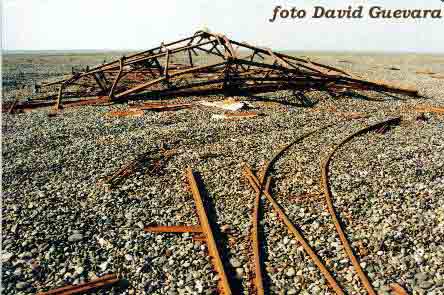
FOTO
4 Photo 4 FOTO 4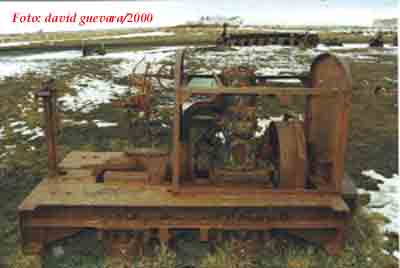
FOTO 5 Photo
5 FOTO 5
|
La foto superior fué registrada aproximadamente en la década del '60. (gentileza del Señor Ernesto Ipas) |
The photo, above, was taken in the 1960‘s (courtesy Señor Ernesto Ipas).
|
Fotografia de sus a fost facuta in anii ’60 ( prin bunavointa d-lui Ernesto Ipas).
|
![]()
|
Copyright © 1999-2002-2003-2011 David N.F.Guevara - Todos los derechos reservados. |
Copyright © 1999-2002-2003-2011, David N.F. Guevara. All rights reserved.
|
Copyright © 1999-2002-2003-2011 David N.F.Guevara Toate drepturile rezervate
|
![]()
RETURN TO HOME PAGE